With its golden-sand coast home to a huge array of spectacular natural attractions, Cornwall captures hearts and minds with its sandy beaches, secret coves, towering rock arches and sea stacks, picturesque fishing villages, sea pools and more. That said, some of the county’s most enchanting features come in the form of its stunning islands which pepper the coastline. Admired from clifftop perches and beachside roosts, these islands provide not only a treat for the eye and the lens, but also offer vital sanctuary to a number of wildlife species too.
Found all around the coast, Cornwall’s islands are a true sight to behold. And, while many cannot be accessed, some can be visited if you have the right means. To learn more about these salt-kissed kingdoms and how to see them, read on for our favourite islands in Cornwall.
St Michael's Mount, Marazion
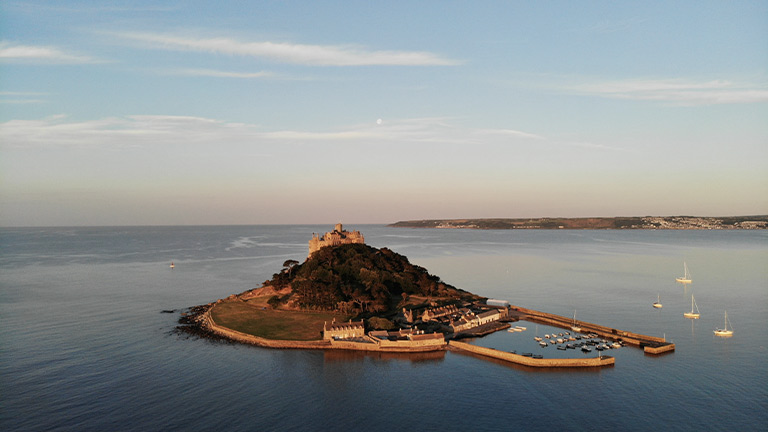
St Michael’s Mount is a magnificent tidal island near Marazion in Mount's Bay, West Cornwall. One of the most famous landmarks in the UK, it’s home to a Medieval castle that stands silhouetted against an ocean backdrop. Still home to a small community of people, it can be accessed via an ancient stone causeway at low tide, while at high tide a small boat runs between Marazion and the island from April to October. Whether you’re exploring the island on foot or admiring its beauty from afar, this fairy-tale setting is one that will reel you in with its incredible scenery, rich history and fascinating legends. The castle, church, harbour and village are open for exploration throughout the year, while in summer, you can also explore the island’s subtropical terraced garden too.
Looe Island, Looe
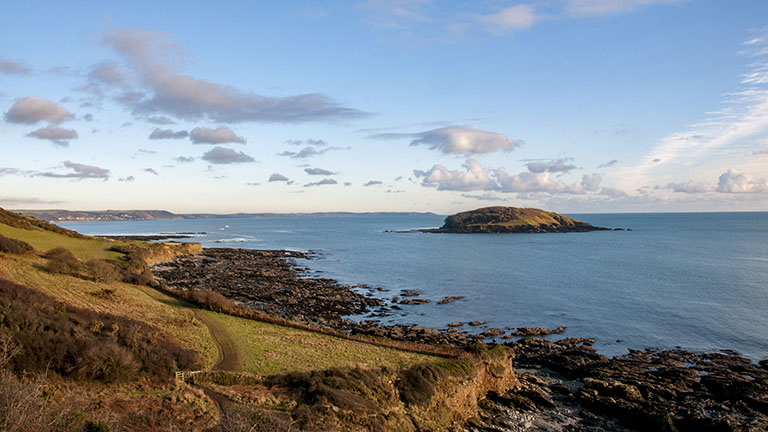
Located just off the coast of Looe in South Cornwall, Looe Island is one of the most magical in Cornwall. Protected as part of the Whitsand and Looe Bay Marine Conservation Zone and looked after by the Cornwall Wildlife Trust, it is an important marine nature reserve and home to all kinds of wildlife species. As it is environmentally significant, access to Looe Island is restricted; however, guided tours are available with Cornwall Wildlife Trust which offer an unparalleled chance to explore its 22 acres, including woodland, grassland and sand and shingle shore. Hop aboard a boat from Looe harbour and explore the island with a local warden, learning all about the island’s history and habitats – from its 20th Century owners (Babs and Evelyn Atkins) to its present wildlife inhabitants.
Seal Island, St Ives
The largest of the “Carracks”, Seal Island is the biggest of a number of rocky islands about 200m offshore and 3.5 miles west of St Ives. Derived from the Cornish word for rocks, the Carracks are one of the favourite lounging places of seals in West Cornwall (as well as lots of other amazing wildlife species) and are the destination of many chartered boat trips departing from St Ives harbour. While Seal Island itself can be seen from the cliffs between St Ives and Zennor, there’s no better way to see it than with a coastal cruise. Team up with Dolly P from the harbour in summer and head out to sea under expert sail (or rather motor), ready to see seals and sea birds, and even dolphins and whales if you’re lucky. If you ask, the operators will tell you all about the old Carracks shipwreck, too.
The Brisons (Man in the Bath), Cape Cornwall

If you’ve never heard of the Brisons, head over to Porth Nanven just south of Cape Cornwall and cast your gaze seaward. Here, you’ll see the unmistakable outline of the 25m-high twin islets of the Brisons lying around a mile offshore. Bearing a striking resemblance to a man’s head and tummy, the islands are comically referred to by locals as “man in the bath”, or more specifically “General de Gaulle in his bath”. Less humorously, it’s interesting to know that the name “Brisons” comes from the Cornish word “brissen” for prison, as these islands were once used as a prison long ago. In bygone centuries, the islands gained further notoriety, being responsible for the demise of many ships and their crews who unwittingly happened across the islands’ garden of underwater rocks.
Asparagus Island, Kynance Cove
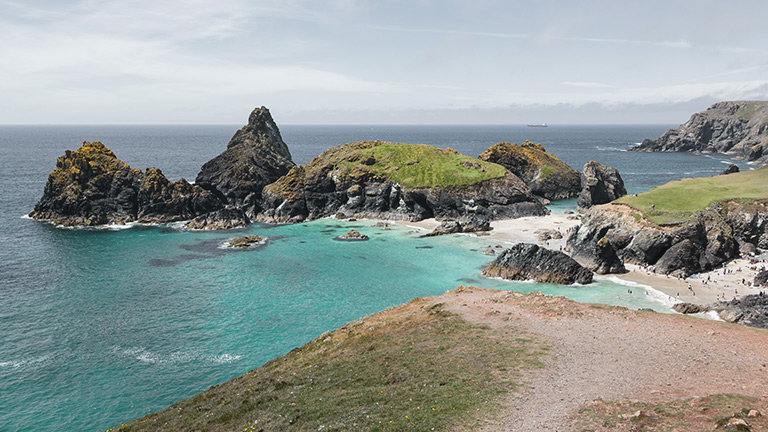
Taking centre stage in the middle of one of the most stunning coves in the world, Asparagus Island on the Lizard Peninsula is a real showstopper. Used as the backdrop for an array of TV productions and films, the island, along with its vegetation-clad neighbours, rises from the cove’s turquoise waters and jumble of serpentine rocks with its nose to the shore and back to the open sea. When the tide is low, you can walk around the base of some of Kynance’s islands on foot, while at high tide on calm days they can be explored via the water by experienced paddle-boarders and kayakers. That said, simply sitting on the beach or on top of the cliffs is a wonderful way to admire Asparagus Island and the towering beauties of Kynance Cove, especially with a hot drink from a flask or from the cove’s seasonal café.
Gull Rocks, Holywell Bay
Face to face with the rugged shores of North Cornwall, Holywell Bay’s Gull Rocks near Newquay are two of the most recognisable natural features in the county. Albeit more rocks than islands, these twin islets are around 500m off the beach at Holywell and rise strikingly into the sky like mini mountain peaks surrounded by frothing swells. While the tide never recedes far enough to walk out to Gull Rocks at low tide, they make for impressive viewing from the shore – especially at sunset. With the sun dipping low on the horizon, the islets are sandwiched between sun and shore and set aglow by orange rays, casting dancing shadows over the water. Take your camera to capture the show or simply head over with a blanket to sit back and enjoy the moment as it unfolds before you.
Mullion Island, Mullion
Known as “Toldhu” by locals, Mullion Island is set within the stunning Lizard National Landscape and sits adjacent to Mullion Cove’s harbour. Rising to 118ft above sea level, this National Trust-run sanctuary is an important haven for wildlife and is a breeding and nesting ground for many seabirds. Though once upon a time a lookout post (a “huer”) was located on the island and used by local fishermen to spy pilchard shoals, today the only inhabitants of the islands are its birds, including great black-backed gulls, guillemots, oystercatchers, razorbills, cormorants and more. View the island from the harbour and surrounding cliffs, or kayak out to its base on fair days and take a closer look from the water. Just be mindful not to disturb the beautiful, feathered residents as you explore!
Godrevy Island, Hayle
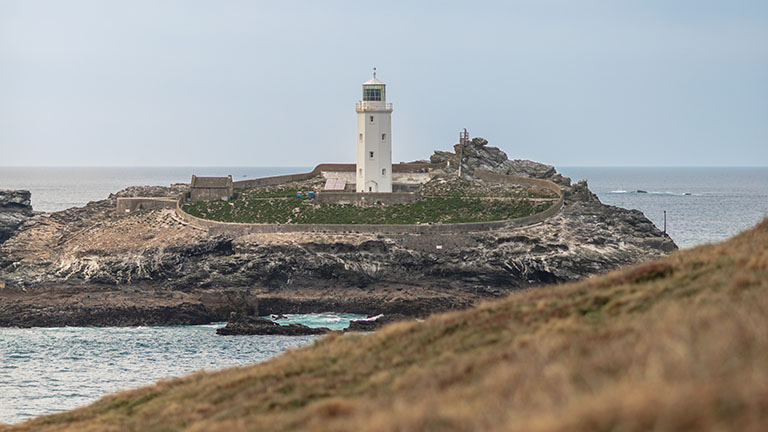
If you’ve ever wandered along Gwithian or Godrevy, you’re sure to have seen the proud figure of Godrevy Lighthouse in the distance. Situated in the middle of Godrevy Island, the lighthouse has an unmistakable intrigue about it, and was even used as the inspiration behind Virgina Woolfe’s novel To the Lighthouse. Constructed in the 1800s, the island’s lighthouse was originally built to warn passing ships of the infamous Stones reef nearby – but not before many had already been lost to its rocks. These days, the lighthouse and its former keepers’ cottages can still be seen on the island, though the lighthouse itself has long been automated. To see the fascinating structure up close, several boat operators run from St Ives’ harbour to Godrevy Island, including St Ives Boat Services.
Puffin Island, Padstow
Also known as Mouls Island, Puffin Island lies off the coast of North Cornwall and is the only place where you can see rare puffin colonies in the county. Nesting from mid-April to mid-July on the islands, these gorgeous puffins make an annual appearance and grace the island with their beautiful, unmistakable painted faces and stout frames. Of course, access to the island is prohibited to protect the habitat of these rare birds, but you can take boat trips from Padstow and Rock out to the island to see them from a distance. In particular, Padstow Sea Life Safaris run from Padstow harbour and take you off an exhilarating journey along the coast. During the 1-hour-long trip, you can expect to see an array of seabirds, as well as seals, dolphins and even whales if luck is on your side.
St Clement’s Isle, Mousehole
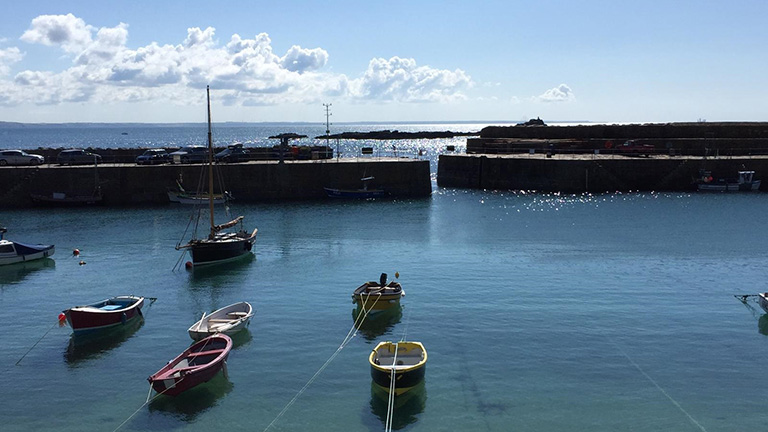
A mini island sanctuary for seals and seabirds, St Clement’s Isle is a rocky spit that protrudes from the water around 500m from the shore in Mousehole. Decorated with lights at Christmas and topped with a cairn, the island is well-loved by locals and many a strong, hardy swimmer has swum out to its rocky foreground on fine weather days. That said, we don’t recommend this to anyone other than the most experienced wild swimmers! Though it’s deserted now but for its marine residents, local legend has it that the island was once inhabited by a hermit. If you’d like to take in the best views of St Clement’s Isle from afar, wander out to Mousehole harbour on calm days, or when the weather is rough, wander up to Love Lane for a bird’s eye view of the whole village and island beyond.
Tintagel Island, Tintagel
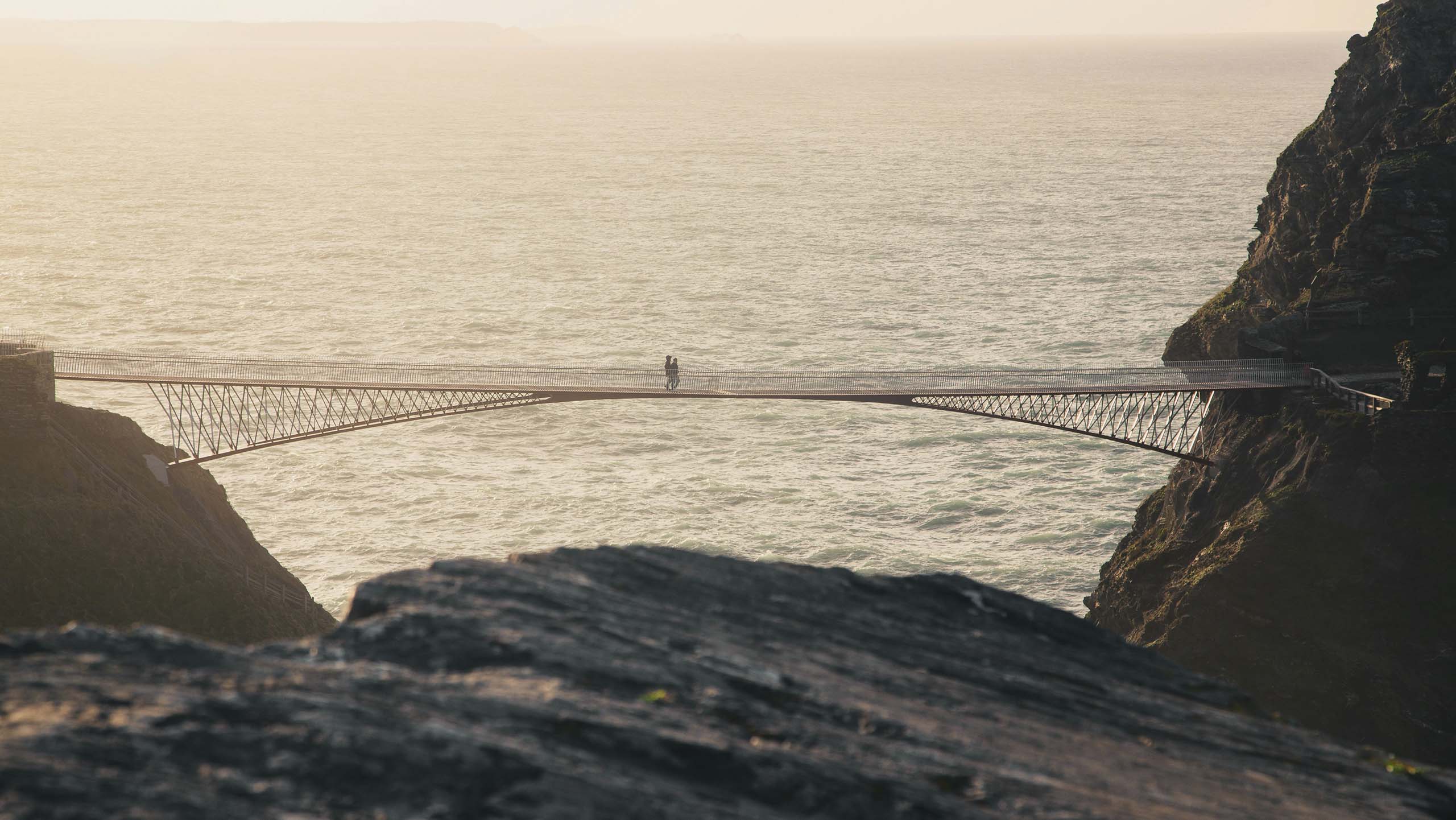
Tintagel Island, though technically a peninsula, simply had to be included in our list of islands in Cornwall. Inaccessible but for an impressive bridge that connects the top of the island with the mainland, it makes for one of the North Coast’s most enigmatic settings. Its most well-known feature, though, is a 13th Century castle that sits atop its salt-washed crown. Inextricably intertwined with the legend of King Arthur, the ruins of this dramatic castle have long inspired legions of writers, artists, and adventurers. Head over to this English Heritage-run gem and explore its walkways, following in the footsteps of time as you trace weathered paths and wind between crumbling walls. From the top of this island peninsula, you can gaze out to sea and down towards the beach below, where the cave of the wizard Merlin hides within the cliffs.
The Isles of Scilly
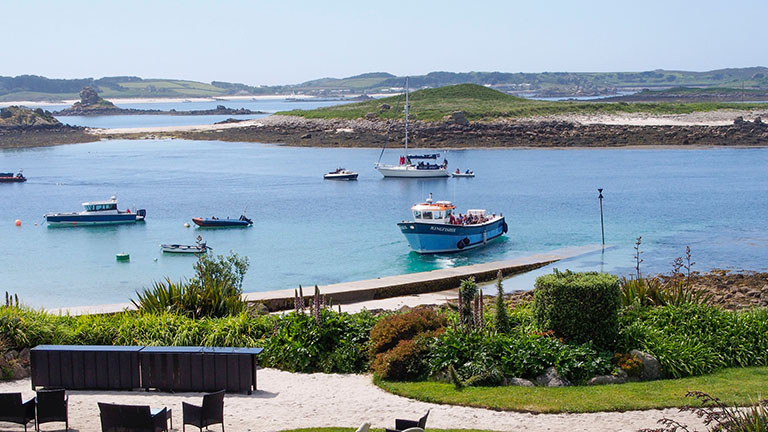
The Isles of Scilly archipelago is found 24 miles off the Cornish coast in the grip of the Atlantic Ocean. Home to around 150 islands, of which five are inhabited, this large group of islands makes for an incredible destination from Cornish shores and is especially perfect for day trips. In fact, so beautiful are these islands that in summer, their crystal-clear waters, swaying palm trees and white-sand beaches are often mistaken for Caribbean scenes. To get there, you can take a flight with Skybus to the Isles of Scilly from Land's End or Newquay, or you can sail from Penzance’s harbour on the Scillonian passenger ferry. For a real treat, you can also whisk yourself away on a helicopter to the Isles of Scilly from Penzance and enjoy the scenic 15-minute journey to Tresco or St Mary’s.
Feeling inspired by Cornwall’s beautiful islands? Take a look at our luxury cottages in Cornwall.